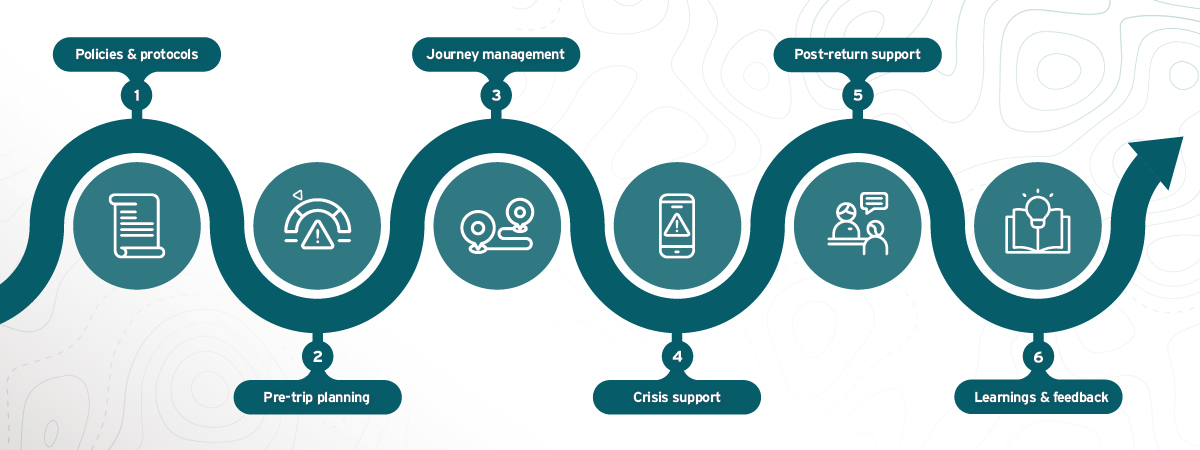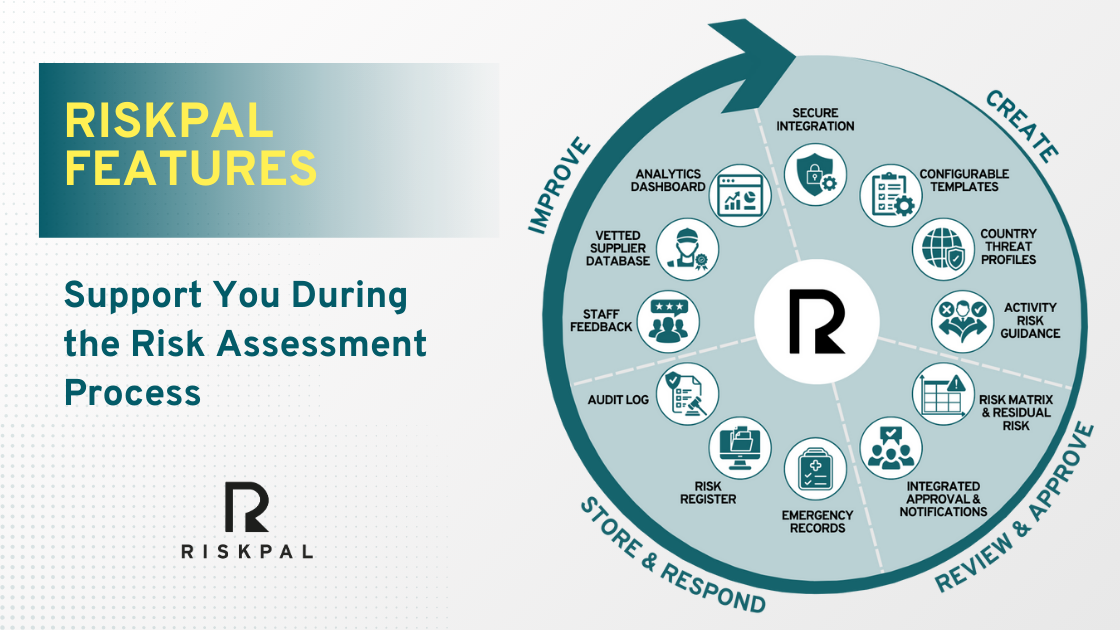Six Vital Ingredients for a Strong Travel Risk Management Programme
All businesses have a duty of care to protect their people, especially when their teams are travelling for work. Every time your employees work away from home, they are exposed to a host of potential dangers or risks around their own health, safety or security; these risks can be dynamic, with the situation changing very quickly.
It is evident that a robust travel risk management programme is essential, but where do you begin and how do you get buy-in from the organisation? We help organisations every day overcome these hurdles.
We’ve broken it down into six easy, flexible and scalable steps you can follow to help protect your travellers, empower your operations and fulfil your duty of care obligations.

2. Pre-trip planning
Once you’ve got your systems in order, this is when you can focus on your actual risk assessment. Organisations that manage travel risk should have the following in place:
- A simple risk assessment form that puts the user experience at its heart. A streamlined, yet robust, process will increase compliance and allow your team to focus on the most pertinent risks and how to mitigate them.
- An easy to access source of intelligence about the potential risks that can be easily integrated into the risk assessment document. All risk assessments should examine threats related to physical safety, digital intrusion, geographic location, mental well-being and the traveller’s protected profile characteristics including, but not limited to, gender, race or religion.
- Vitally important, the process should not only assess risks specific to the destination, but also the activities that the traveller will be undertaking in the field to ascertain if there are additional threats.
- Competent managers or advisors reviewing and approving the risk assessments.
- Easy access to the right version of the risk assessment at every stage of the process for all involved. Approved risk assessments, their sign-off, history and change log should be stored in a central register for tracking and crisis management purposes.
- For high-risk travel, senior management are involved in the pre-trip planning process.
3. On-the-road journey management
These are the measures you take on the ground to keep your people safe.
Fundamental to safety in the field is using vetted, safe suppliers. We all know that a major threat when travelling is being involved in a road traffic incident. Ensuring your people are using reliable drivers, vehicles, domestic airlines and are staying at appropriate accommodation is a huge element of safety.
Your travel management company can often help, but it is important you learn from your travellers about their experiences with suppliers. Feedback loops should be automatic, enabling your travellers to share any bad experiences and allowing you to avoid making the same mistake in the future. A well-established feedback loop will ensure that you organisation only uses good and safe service providers.
4. Crisis support
What if something goes wrong during your employees’ stay?
Having robust organisational response to a localised incident (for example an assault or car accident) or a major change in the security context of a destination (like a coup, natural disaster or a conflict outbreak) is part of your duty of care and expected by your travellers.
An understanding from both travellers and managers of what to do and who to call in case of emergency is vital. It should be built into any pre-deployment training and addressed in the risk assessment so that everyone has a realistic understanding of an organisation’s ability to respond. In an emergency, family liaison is critical.
Good communication with the individuals in the field is crucial. Location-based tracking apps with panic alarms are increasingly popular, but beware that they can add a false sense of security. Travellers are notorious for not downloading or updating the applications and relying on the stability of mobile networks in a crisis can often backfire. So, build in a contingency communication strategy.
5. Post-return support
Consider what long-term support might be needed for people who have been affected by an incident. This should also include the next of kin and loved ones.
Counselling services should be made available. If this is being provided by an insurance-related Employment Assistance Programme (EAP) make sure it is appropriate to the incident.
Ideally managers dealing with affected individuals should also have received incident management and family liaison training. If the incident has involved multiple staff members, internal communications should also be addressed to enable managers to deal with multiple affected family members simultaneously.
6. Lessons learned and feedback
Almost every organisation that has significant travel, will experience an incident at some point. This is an unpleasant reality, but the most important thing is to examine if there were preventable steps leading up to the incident and ensure the same mistakes do not happen again. Accident reporting and analysis is a health and safety requirement.
However, many incidents may have been avoided if you had listened to your travellers throughout the travel process. Systematic feedback and collation of this feedback can save your organisation money and, most importantly, keep your people safe.
At RiskPal, we have helped many NGOs, media companies and businesses develop their internal travel risk management infrastructure, train their staff and run streamlined risk assessment systems. RiskPal makes risk assessment simple and achieving compliance straight forward.



